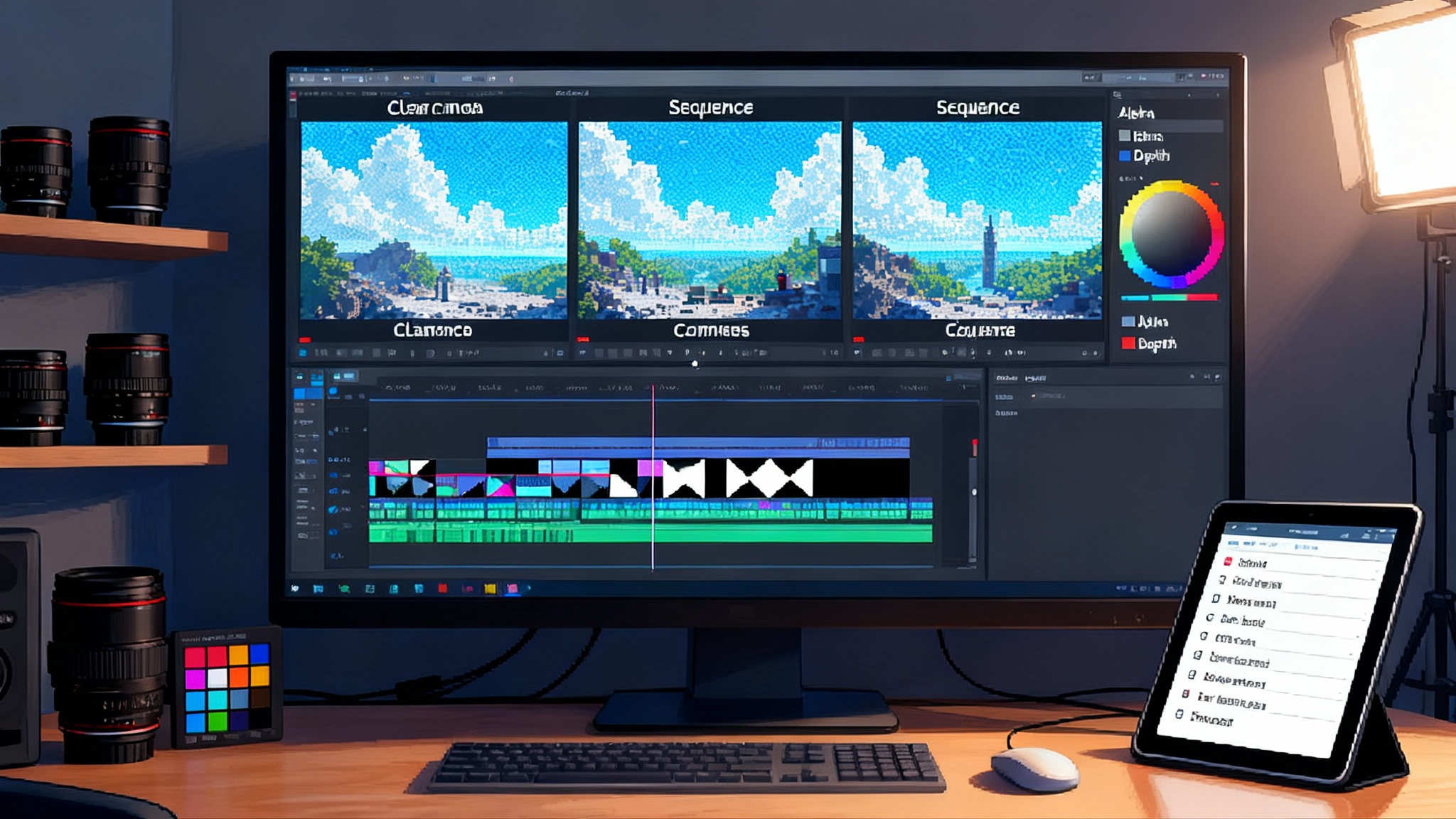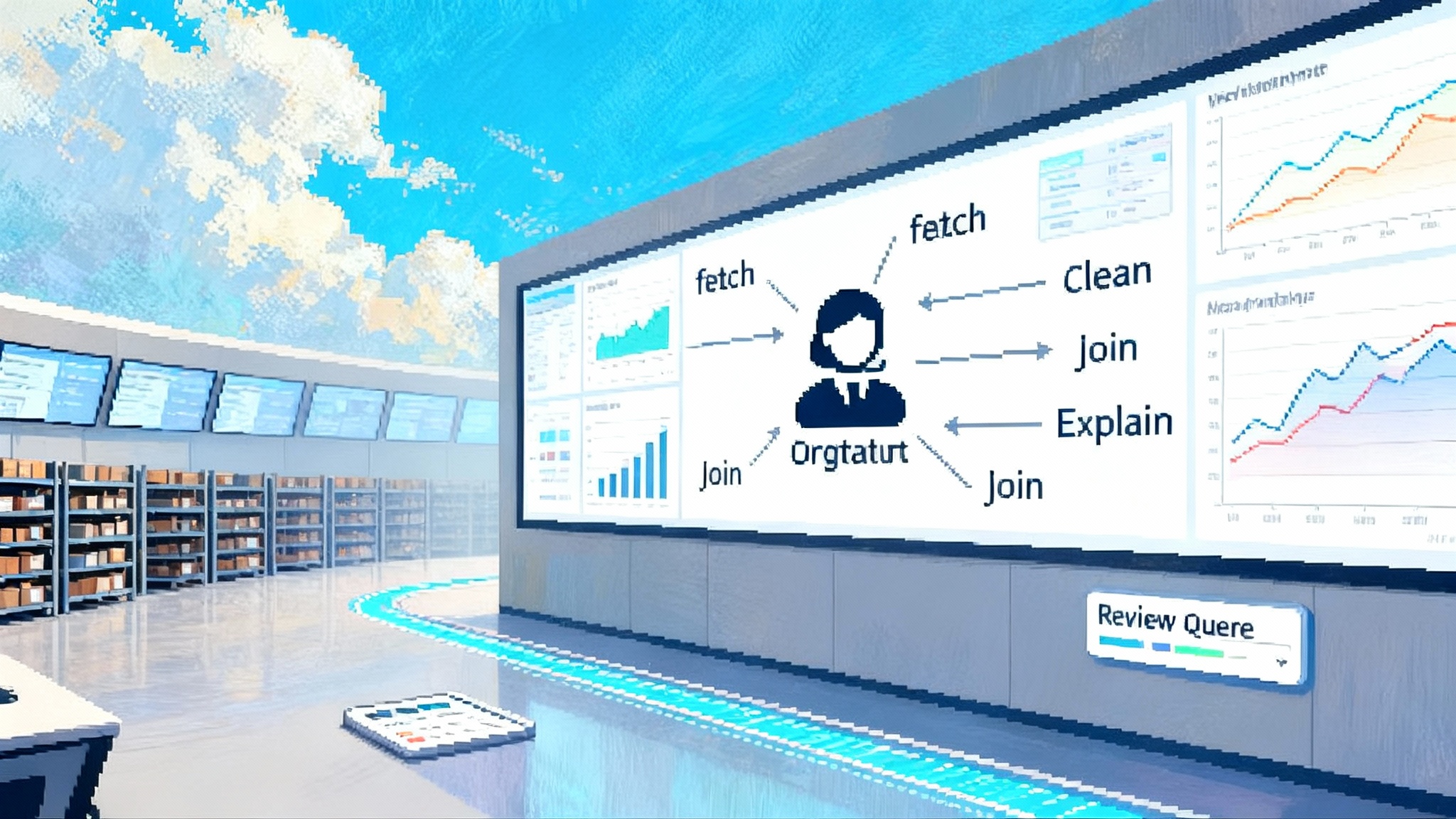RNGD and the Power Bottleneck Shaping On Prem LLMs
Power, not GPU supply, is the new ceiling for on premises LLMs. Learn how RNGD style inference appliances win on tokens per joule, what to measure, and how to design a fleet that scales predictably under real rack limits.

A signal from the edge
FuriosaAI's new RNGD Server lands with a clear promise: more useful tokens per watt inside the power envelopes that real data centers can actually deliver. It is not just a different box with accelerators. It is an argument about where the bottleneck has moved. For the last two years teams obsessed over getting GPUs at all. In 2025, many discover the constraint is not silicon supply. It is rack power and the practical ability to cool what you already own.
That shift matters most for teams building agentic LLM systems. Agents amplify both concurrency and latency sensitivity. They call tools, retrieve context, and chain multiple model calls per user action. If power, not GPU count, sets your ceiling, then the architecture that delivers the most tokens per joule inside a rack wins. Startup built inference appliances like RNGD are designed for that game.
From GPUs to watts: why the constraint moved
Power is the quiet limiter. Colocation providers can sell you space tomorrow, but they may not be able to give your cage another 50 kilowatts for twelve months. On premises, facilities teams can upgrade PDUs or add another row, but upstream feed upgrades and cooling retrofits move on utility timelines. Even when you can secure high density, you often get a hard cap per rack and a fixed per kilowatt price, plus cooling overhead.
Once you accept the cap, the question changes. Within that limit, how many tokens per second can you stream, and at what cost per token, across your real workloads? General purpose training GPUs are marvelous, but they carry silicon features and system complexity that inference does not always need. A startup appliance can optimize for the common case: quantized decode heavy workloads, long context reads, and aggressive batching across many small requests. If that design yields better tokens per joule and higher throughput per rack inside a fixed power limit, it wins in production even if headline FLOPS look lower.
What teams actually buy: appliances with a job
Teams do not buy chips. They buy outcomes. An inference appliance is a unit of outcome that pairs hardware with a serving stack. It should present clear service level expectations at a given power draw. Think of it as a specialized kitchen station rather than a warehouse of ingredients. You slot it into a rack, wire it to your network, point your orchestrator at a predictable API, and track a few observable KPIs: tokens per second, latency percentiles, queue depth, and power draw.
RNGD shows where the market is headed. Instead of delivering a blank canvas, these boxes match a curated software layer with a predictable power envelope. The value is not only efficiency. It is the reduced operational variance you inherit when the box, drivers, runtime, telemetry, and quantization toolchain are tested together. That is what lets you plan a fleet rather than nurse a lab. For teams moving from pilot to production, this mirrors the path we saw in agent platforms that went from demo to enterprise agents with opinionated tooling.
Throughput per rack beats FLOPS per chip
FLOPS do not directly buy served tokens if your racks are power limited. Throughput per rack does. A simple way to think about it:
- Define TPR as tokens per second per rack at your target p95 latency.
- Define EPJ as energy per token in joules for a representative workload mix.
- Given a rack power cap P in watts, the theoretical TPR ceiling equals P divided by EPJ, discounted by utilization and overhead.
The math is plain. If one system can decode a token using 1.8 joules and another uses 3.0 joules, the more efficient one can stream roughly two thirds more tokens at the same rack power. That margin compounds when you increase concurrency and when you account for cooling overhead and idle draw.
A worked example helps. Treat these numbers as illustrative, not vendor claims. Imagine a 20 kW rack allowance reserved for inference.
- System A, a general purpose GPU stack, delivers 15,000 tokens per second at full tilt with 3.0 J per token.
- System B, a specialized inference appliance cluster, delivers 25,000 tokens per second at 1.8 J per token within the same 20 kW.
At equal power, System B pushes about 67 percent more tokens. If your agent uses 1,200 tokens per complete task across multiple model calls, that difference is roughly 20 more agent tasks completed per second for the same power bill. Variance in workload mix will push the numbers around, but the structure of the advantage holds. In power constrained environments, tokens per joule is the lever, not absolute accelerator count.
Cost per token: the three line items you control
Cost per token is more than electricity. It has three dominant line items:
- Capex amortization, expressed per token. This includes the appliance price, memory configuration, and networking, amortized over a useful life and discounted by expected utilization.
- Electricity and cooling, expressed per token. Power draw at load plus cooling overhead, multiplied by your per kWh rate.
- Software and operations, expressed per token. Serving stack support, model licenses if any, observability, and the human time to keep the system healthy.
You can model this in a spreadsheet your CFO will respect. Here is a clean framework with placeholders you can plug with your own numbers:
- Tokens per second per appliance at target p95 latency: tps
- Energy per token at steady state: epj
- Appliance power at steady state: P = tps × epj
- Appliance capex: C
- Useful life in months: L
- Average monthly utilization at or near steady state: U
- Electricity price per kWh: E
- Cooling multiplier over IT load, as a fraction: M
- Monthly software and ops cost: S
Derived values:
- Monthly tokens served per appliance ≈ tps × 30 days × 86,400 s per day × U
- Monthly kWh consumed per appliance ≈ (P × 24 × 30) ÷ 1000 × U × (1 + M)
- Capex per token ≈ (C ÷ L) ÷ monthly tokens
- Power per token ≈ (monthly kWh × E) ÷ monthly tokens
- Software per token ≈ S ÷ monthly tokens
- All in cost per token ≈ sum of the three per token components
Now compare two configurations under the same rack power cap. The one that lets you pack more usable tokens into the same kW will usually win even if its capex per watt is higher, because the denominator in every per token term grows with throughput. This is precisely the design goal of a purpose built inference box.
Agentic systems change the calculus
Agents chain calls, branch, and make more small requests than a single chat completion. They often call a fast router model, then a planning model, then a tool, then a reasoning model, and finally a response shaper. They also benefit from streaming tokens as soon as they are decoded, because interactivity matters for human in the loop tasks and for downstream tools that start work on partial output.
In this world, three properties matter more than raw peak throughput:
- Low p95 and p99 latency under high concurrency. Queues and batchers should not spike tail latencies when bursts hit.
- Efficient small batch decode. Many agent calls are short, and they dislike deep batching that raises p50 latency.
- Deterministic performance inside a fixed power envelope. Facilities teams and SREs need predictable power draw to avoid tripping limits.
The shift to real production agents is already visible as agents are replacing dashboards in operational workflows. An inference appliance tuned for agent loads will expose a serving API that favors low overhead token streaming, admission control to keep short jobs responsive, and preemption so long contexts do not starve urgent requests. All of that rolls up to higher useful throughput per rack for agent workloads, not just benchmark throughput.
Model choice under a power budget
When power is the constraint, model choice tilts toward the best quality per joule, not only the best quality per parameter. That pushes teams to consider a layered approach:
- A small but competent router that can resolve 30 to 60 percent of requests on its own.
- A mid sized reasoning model, often quantized, that tackles most of the remainder with careful prompt design and retrieval.
- A specialized tool or domain model for the hardest cases, possibly sparse or expert routed.
Quantization is the hidden hero. Int8 and mixed precision decode paths can cut energy per token with a small quality hit, especially when prompts are engineered for brevity and when retrieval packs only the essentials. Structured decoding and constrained grammars reduce wasted tokens. Speculative decoding shifts some work to a small draft model, improving both latency and joule efficiency for the larger model that verifies drafts.
Mixture of experts can help if the serving stack keeps inactive experts truly cold and if routing costs are well controlled. The win is not only arithmetic sparsity. It is the ability to keep more of the fleet in an energy efficient operating point while still offering bursts of capacity for hard queries.
Designing an owned inference fleet for 2026
Treat 2026 as a planning horizon. Your owned fleet should be power aware from the first RFP to the last dashboard. Here is a pragmatic blueprint you can adapt.
-
Start with power, not accelerators. Nail down real per rack caps, cooling style, and any derates for ambient conditions. Get the per kW price and the expected timeline for upgrades in writing.
-
Plan for density you can service. If your facility supports liquid cooling, understand the operational procedures for service loops, leak detection, and quick disconnects. If you must stay on air, target appliances that perform well at modest inlet temperatures and that publish honest typical draw at steady state.
-
Specify tokens per joule on a reference workload. Ask vendors to report EPJ and p95 latency on a public model and a published prompt mix. Favor those who can demonstrate performance stability across a week long soak test rather than a single run.
-
Build observability around a power budget. Track tokens per second per rack, EPJ, and p95 latency as first class metrics. Alarms should trigger on drift that degrades joule efficiency, not only on absolute latency. If you are deploying to clinics, retail stores, or warehouses, the same principle applies at the edge, where edge observability turns shadow AI into a managed productivity engine.
-
Choose a serving stack that respects the appliance. The runtime should exploit the hardware strengths, accept standard model formats, and offer simple autoscaling knobs. It should provide queue depth visibility and admission control to protect tail latency and publish token rate limits per tenant.
-
Keep a clean spillway to the cloud. When queues breach your latency SLOs, spill workloads to a cloud pool with the same API. Use a queue and token budget that prevents runaway costs. When power becomes available on premises, draw traffic back.
-
Make prompt caching and KV reuse a first class citizen. Many agent chains repeat context across steps. Caching reduces both EPJ and latency and can create a strong feedback loop where more of your fleet stays in an efficient operating point.
-
Treat model updates like firmware. Version your models, keep rollbacks ready, and measure EPJ before and after an update. A model that is two percent more accurate but ten percent more expensive per token may not belong in your default path.
-
Have a realistic maintenance plan. Appliances reduce integration pain, but they still need firmware updates, runtime patches, and careful network configuration. Put this into a monthly cadence and hold a power budget review each quarter.
Buyer checklist for startup inference boxes
- Power honesty. Nameplate draw, typical draw at steady state, and idle draw at minimal load. Ask for power versus throughput curves.
- Cooling profile. Supported inlet temperatures, hot aisle expectations, and whether the design tolerates modest derates without large performance penalties.
- Tokens per joule on public models. Measurements at small batch sizes for agent workloads, plus a view at higher batch for bulk jobs.
- Model coverage. Supported quantization formats, maximum context length without painful regressions, and how the runtime handles speculative decoding.
- Serving stack maturity. Built in streaming, admission control, and preemption. Strong language bindings and a stable REST or gRPC interface.
- Observability. Native metrics for EPJ, tokens per second, p95 and p99 latency, queue depth, and circuit breaker status.
- Fleet features. Node health, canaries, rolling restarts, and load shedding that respects latency goals.
- Interop and portability. Standard model import, on device compile times, and a path to run the same models in the cloud for burst.
- Vendor viability. Spares program, next day parts, and a clear software roadmap.
A realistic cost model you can share with finance
If the engineering narrative above sounds right but hard to ground in numbers, bridge the gap with a spreadsheet shared by engineering, SRE, and finance. Start by locking a power cap per rack and a cost of power that includes cooling. Then express every decision in the unit of cost per token at your target p95 latency.
- Build rows for each appliance configuration you are evaluating. Include capex, expected tps at p95, and EPJ. If vendors provide normal and hot aisle performance, keep both.
- Convert EPJ into kWh per million tokens. This makes electricity line items pop for non technical stakeholders.
- Add a utilization slider. If you cannot hold 70 to 80 percent utilization without tail regressions, the most efficient hardware on paper will underdeliver.
- Include a cloud spillway row that triggers at a queue depth or p95 threshold. Price it with a token budget, not open ended requests.
This simple discipline exposes real tradeoffs. An appliance that is slightly more expensive but 20 percent better in EPJ wins quickly under a power cap. A serving stack that keeps p95 tight under burst can raise utilization enough to reduce capex per token more than a small hardware discount would.
Where RNGD fits in the arc of agent infrastructure
RNGD is part of a broader shift from flexible labs to opinionated production stacks. We saw similar consolidation on the agentic side as teams moved from experiments to products that must be monitored, controlled, and kept within predictable cost envelopes. If your roadmap points toward customer facing agents that handle real work, learn from peers who already moved beyond dashboards to outcomes. The pattern is familiar in stories like agents are replacing dashboards and in platform choices that streamline the path from demo to enterprise agents.
RNGD's bet is straightforward. Align the silicon, memory, interconnect, and runtime to the decode heavy path that dominates inference. Optimize for energy per token. Keep latency predictable under concurrency. Expose the right metrics so SREs can steer the fleet to the most efficient operating point. If that resonates with your workloads, you will feel the impact as soon as you roll a few boxes into a constrained rack.
Risks and open questions
- Vendor lock in. A tight coupling of hardware and runtime can deliver great efficiency, but it can also limit your options if your workloads evolve. Favor vendors that commit to open model formats and stable APIs.
- Software maturity. New runtimes can have rough edges. Plan a hardening phase where you soak test with real traffic and instrument for tail events.
- Multi tenancy. Agentic workloads can reveal noisy neighbor issues. Ensure admission control, token rate limits, and per tenant queues are first class features.
- Model drift. Quality gains often increase energy per token. Keep score on the true cost of accuracy and be willing to route only the cases that benefit to larger models.
- Supply chain and spares. Appliances reduce integration pain, but they still depend on fans, PSUs, NICs, and memory. Confirm spare kits and field replaceable unit procedures.
The bottom line
FuriosaAI's RNGD Server is more than a new box. It is a marker that the center of gravity in LLM deployment has shifted. When power is the real constraint, the metrics that matter are tokens per joule at your target latency and tokens per second per rack that your facility can power and cool. Startup inference appliances can win this race because they align the entire stack to that outcome.
If you plan to own inference in 2026, start designing a power aware fleet today. Model costs per token with power in the loop. Favor serving stacks that keep latency low under concurrency without spiking energy per token. Build procurement around power honesty and software maturity, not only silicon buzzwords. With that posture, you can turn a hard power cap into a durable advantage and ship agentic systems that feel fast, cost less, and scale with the infrastructure you already have.








